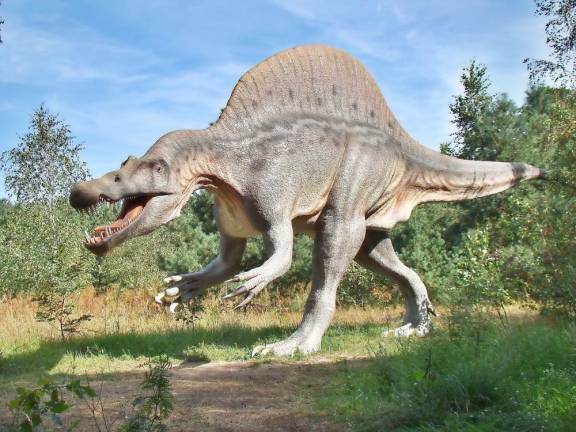Developer defends his dinosaur park vision
Monroe. Developer Neil Gold said the park he envisions is educational, not an amusement park. He said he has always known about the wetlands on the property, and that his plan would provide the required buffer zone.

Resistance to Neil Gold’s dinosaur park proposal is familiar to him.
“In another lifetime I was a professor of urban planning, an adjunct at Yale, Princeton and the University of Pennsylvania, and I used to start my classes by telling students the two rules to urban planning,” he said. “The first one is: people hate people. Then everyone laughed and didn’t understand what I was getting at. And the second one is: the last one into a town wants to be the last one in. Then, they understood.”
After studying American history and literature at Columbia, Gold began lecturing on the history of religion at the Newark College of Engineering. Among succeeding credits on his resume are assistant to the president of a labor union, tax consultant for former New York City Mayor John Lindsay, lobbyist (he played a role in Johnson’s landmark immigration act of 1965, which ended de facto discrimination against certain ethnic groups), consultant to two presidential commissions, speech writer for Senator Eugene McCarthy, and — of course — developer. Gold also helped establish the Suburban Action Institute, a non-profit that aimed to improve relationships between U.S. cities and suburbs. A common thread through his pre-builder career is community development and housing for low and middle income families.
Gold is passionate about his dinosaur park project, and well-armed against the major arguments of his adversaries. He expressed his frustration.
“What I’m quite surprised about is people have opinions on something they know nothing about,” he said. “They haven’t seen the plans but they’re opposed to it.”
The aim of the park, said Gold, is to synthesize elements of similar themed attractions with education around dinosaurs. It would be “entirely educational,” with “no aspect of this that’s an amusement park.” His plan for the park in Monroe is largely based on others around the nation, namely the “Field Station: Dinosaurs” park in Leonia, N.J.
“There’s just nothing that relates to amusement parks as we think of Disney World or even Legoland,” he said.
A project plan document for the Empire State Development Grant involved mentions that the park would appropriate educational content developed by paleontologists at the American Museum of Natural History and the University of Texas.
For years, he tried and failed to find a home for the park in Orange County. Before looking to Monroe, the developer tried his luck in Wallkill.
“They thought this park didn’t fit the recreational definition in the zoning laws. The town wanted me to continue in another place. Wallkill’s a big town. But I felt they mistreated me,” Gold said. “For one year, the planning board kept this going, even though the planning board adjudicated at the very beginning that we were a permitted use. We were never rejected from Wallkill. I rejected Wallkill.”
True as this may be, one cannot help but conjure the image of a scorned lover insisting their breakup had been mutual.
After Gold parted ways with Wallkill, he discovered the site in Monroe near The Golf Club at Mansion Ridge.
“We were interested in Monroe from the very beginning, but we couldn’t find a site close enough to Route 17,” Gold said. “Monroe is a better site for many reasons: it’s closer to New York; it’s closer to Jersey; it’s closer to Westchester; it’s about eight minutes from Woodbury Commons. In many ways it’s a sterling site for this.”
“We intend to stay as far away as possible from any houses,” he added.
Gold is aware of the petition against his dinosaur park. On April 11, the creator of the petition, Maureen Richardson, shared a post about problems the development may cause. The site rests on wetlands protected by the state and federal government, Richardson warned, and the surrounding area could suffer “severe flooding or erosion if deprived of the benefits of this natural resource.”
However, Gold contends with Richardson’s claim that “the protected area spans what looks like the entire lot — or at least the entire buildable area.” He explains, “Given the extensive wetlands, [of the] 131 acres of property, we’ll probably end up using 35 at the most, and our footprint on the land will be extremely limited because we have virtually no buildings.”
He added that he and his development team have “always known” about the wetlands.
“We will never go near the wetlands,” he said. “There’s a 100-foot buffer around the wetlands demanded by the state, and no one is more strict than the New York State Department of Environmental Conservation in making sure the wetlands are not touched.”
Looking ahead to the town board meeting on April 18 — an important step in the proposal process — the developer said that he is “glad that people are able to express their views,” and that he will “answer any questions that anyone asks.” In the “Monroe Matters” Facebook group, many residents have already stated their intention to attend the meeting, where they hope to voice a slew of concerns.